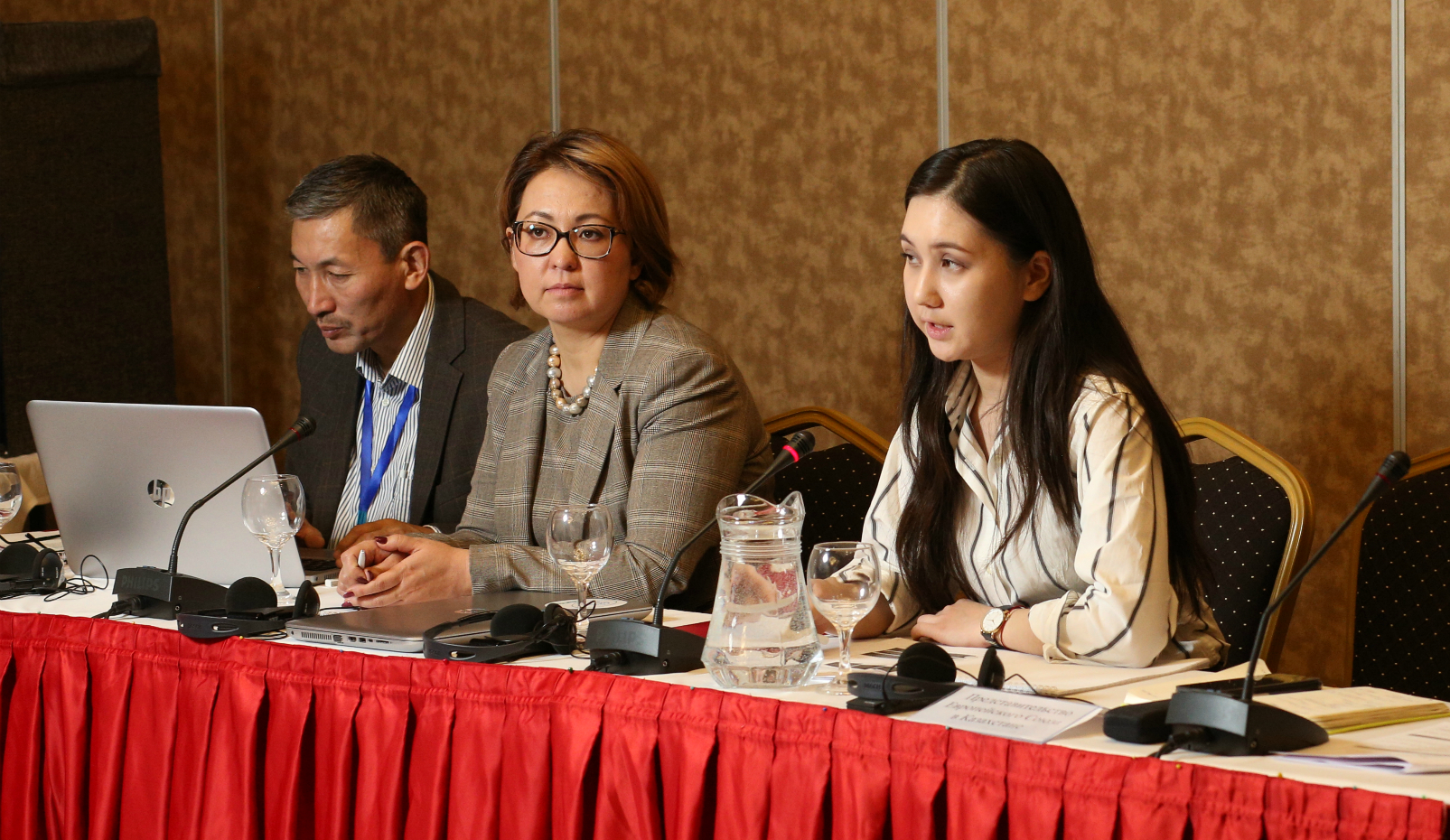riverbp
Network of river basins / Meetings
Promoting the concept of ecosystem services in Central Asia
 22.11.2017
22.11.2017
Promoting the concept of ecosystem services in Central Asia
November 22, Almaty hosted the conference on the results of CAREC’s project on “Phase II: Support towards local initiatives on environmental governance and water resources management in CA”. The project was supported by the Government of Norway.
The representatives of ministries of foreign affairs, parliaments, agencies and departments on water resources management and environmental protection of Central Asian countries, as well as international organizations and NGOs have attended the conference.

Central Asian countries are facing serious challenges in the areas of environmental protection including the reduction of environmental sustainability, air pollution, deterioration of water quality and soil. Considering this, in the period 2012-2014 the Government of Norway has financed the project called “Support towards local initiatives on environmental governance and water resources management in CA” in order to promote sustainable basin management in small transboundary watersheds and to contribute to the creation of a critical mass of knowledge on sustainable development issues in the region. CAREC has continued the realization of the project throughout Phase II.
The main directions of the project in the second phase were the pilot implementation of incentives for ecosystem services. The promotion of ecosystem services is a set of various voluntary agreements for the conservation and sustainable use of different natural ecosystems between any physical and legal persons. The methodology was successfully tested in four pilot river basins: in Kazakhstan (Ikan-su), Kyrgyzstan (Chon-Aksuu, Zerger) and Tajikistan (Shirkent).
For example, in the Zerger aiyl aimak (local name of village), in Kyrgyzstan, the rehabilitation of five sources has been carried out, after which the local community received an access to clean drinking water, and local stakeholders collected their own funds to restore two more sources. Also, in Kyrgyzstan, as part of the project, water measuring equipment in the Chon-Aksuu river basin has been installed for more efficient irrigation among local farmers.
In Kazakhstan, in the Turkestan region, 40 people have been trained in growing vegetables in the greenhouses, 13 families in two villages of Khantagi and Zhana Ikan have greenhouses on the household plots. Currently, the number of greenhouses has increased up to 49, which were built by the residents themselves. The income from one greenhouse was at least $ 5,500, which proves that this alternative method of generating income for farmers is more profitable.

Thus, the project has shown that it is possible to show to the local community the value and economic benefits of conserving natural landscapes and pastures through the assessment of ecosystem services for the rational management of agriculture.
The increase of the capacity of various environmental, water and other specialists play an important role in the sustainability of efforts aimed at the protection of the environment in the region. Within the framework of this project, with the participation of a number of international partners (the UN Environment Program, the OSCE Programme Office in Astana, the European Union, the Smart project funded by USAID and the Climate Adaptation and Mitigation Program for Aral Sea Basin (CAMP4ASB) funded by the World Bank) an annual Central Asian Leadership Programme for young ecologists of Central Asian countries has been launched. The main objective of this program is to demonstrate to young specialists from various fields of environmental protection the benefits and advantages of regional cooperation in water resources management and energy in the course of active discussions and training with international and regional experts, thereby developing the potential of young leaders of Central Asia and Afghanistan.
Background
The biological diversity and ecosystem services that it provides are the foundation of life on the Earth, as well as the source of livelihoods and the guarantee of human well-being around the world. In fact, these are the services, which provide humanity with natural resources, healthy habitat, and other ecologically and economically significant "products." For example, ecosystems create opportunities for human habitability by providing high-calorie food and clean water, disease and climate regulation, crop pollination, and soil formation, as well as ensuring recreational, cultural and spiritual needs of people.
Despite its estimated value of many trillion USA dollars, these assets are not yet properly recorded in political and economic lives, and therefore the investments in their protection and management are insufficient.
All natural communities in their own way participate in the process of providing following types of ecosystem services:
- Providing services – products that are derived from ecosystems. This category includes food, fresh water, natural fibers, wood fuels, and genetic resources.
- Regulatory services - benefits that are derived from the regulation of ecosystem processes. For example, this includes the regulation of air quality, climate, water, erosion, epidemics and water purification. Examples also include the filtration of pollutions resulted from wetlands, the pollination of plants with insects, the regulation of climate by the absorption of carbon by trees or the ocean, etc.
- Supporting services - the services that are necessary to ensure the provision of all other ecosystem services. This includes services such as soil formation, photosynthesis, the production of primary materials, the water cycle and the nitrogen cycle in nature.
- Cultural services - intangible benefits that people receive from ecosystems through spiritual enrichment, development of cognitive activity, recreation, aesthetic experience, accumulation of cultural heritage of their people. For example, some natural objects within religion are given a sacred status, which, by the way, often allows to keep them intact.
The protection of biodiversity and prevention of its further loss is a necessary investment in our common future. Over the past 50 years, the quality of about 60% of global ecosystem services, including 70% of regulatory and cultural services, has been degraded by human activities.
Currently, further degradation of ecosystem services continues as a result of the growth of the world's population, economic expansion, the implementation of new technologies in the land use and climate change. The most significant engine for the transformation of ecosystems is the expansion of agriculture. At this point, about 40% of the earth's surface is used by the agricultural sector.
Development of civilization and population growth increase the demand for various ecosystem services, and the economy has to choose between different types of services. For example, forest tracts can be transformed into the agricultural lands. But it should be understood that this can lead to the reduction in services with equal or even more value, such as providing clean water, carbon sequestration, timber, tourism, flood management, and droughts, etc. In such cases, the assessment of ecosystem services allows us to identify more efficient ways of using resources.

